Microsoft's Azure OpenAI Service
Let's dive straight into the extraordinary synergy between Azure and OpenAI, two industry-leading technologies that are reshaping the digital landscape and transforming the way we think about artificial intelligence (AI). Azure, the powerful cloud computing platform by Microsoft, and OpenAI, the trailblazer in advanced AI research, have joined forces to unlock new possibilities and accelerate the development of cutting-edge applications.
In this blog, we will dive into what Azure OpenAI Service is, how it can benefit you, OpenAI's impact on the Azure exosystem, and finally, Azure OpenAI use cases.
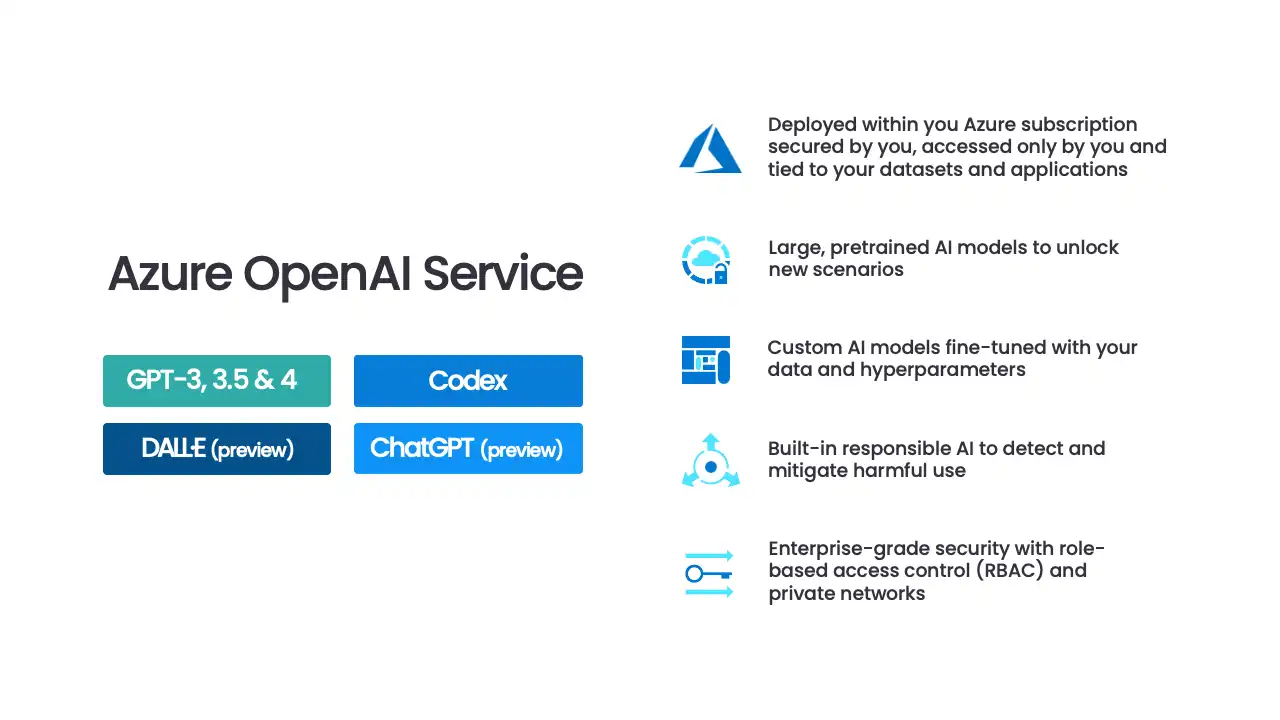
What is Azure OpenAI Service?
Azure OpenAI service refers to the integration of OpenAI's powerful artificial intelligence language models and services into the Microsoft Azure applications and platform.
Microsoft Azure OpenAI is a powerful artificial intelligence service that allows users to create and deploy AI models within the Microsoft Azure platform. With this integration, developers can utilise the power of OpenAI’s language models to build advanced applications, enabling them to automate tasks, quickly process large amounts of data, and interact with customers in natural ways. This ground breaking technology opens new possibilities for businesses looking to leverage AI solutions for their operations.
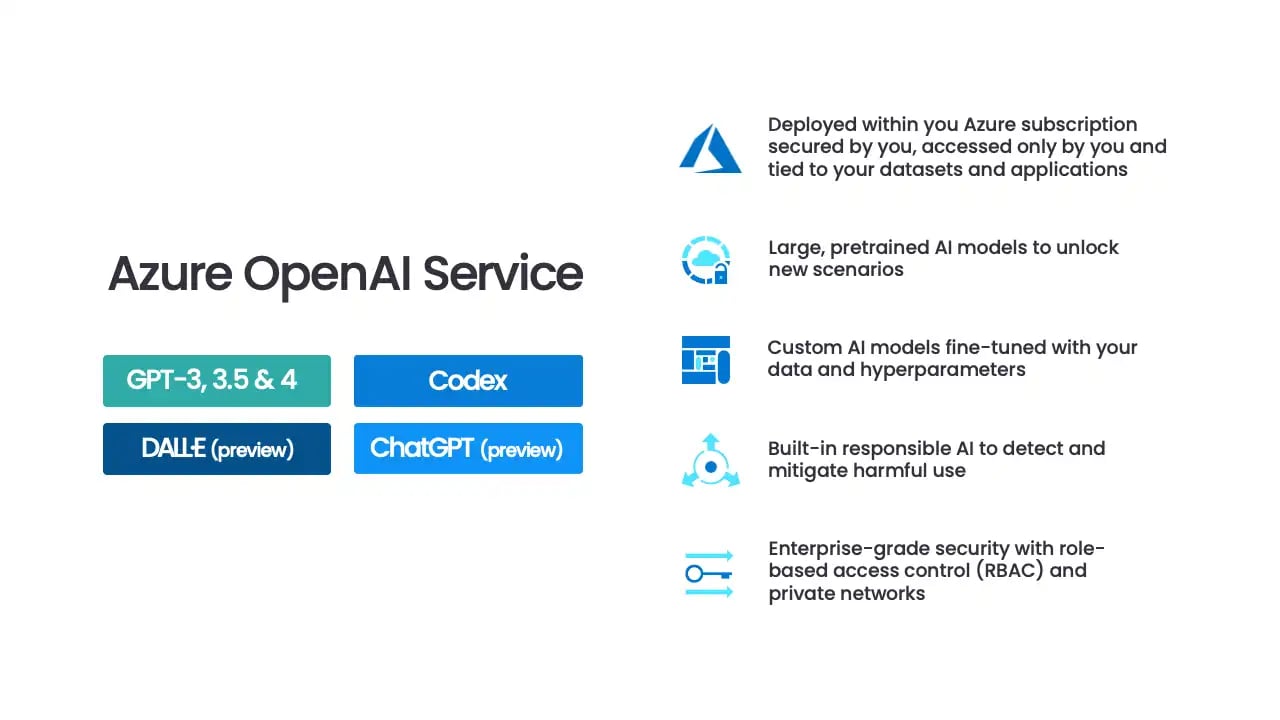
How can Azure OpenAI be Utilised?
Microsoft’s Azure OpenAI service has a wide range of potential use cases in industries such as healthcare, finance, retail, manufacturing, and many others. In healthcare, for example, applications utilising OpenAI could enable medical professionals to diagnose diseases more accurately using natural language processing and machine learning. In finance, AI models built with OpenAI can be used to automate the process of analysing stock market trends or for fraud detection. Retail businesses could use AI-powered applications to provide personalised customer experiences, while manufacturers could leverage predictive analytics and real-time insights to optimise their operations. The possibilities are endless!
Below is a sample wireframe schematic of how a contact call centre can utilise Azure OpenAI to automatically transcribe speech-to-text to discover conversation trends, insights, call reasons, and much more usable data.
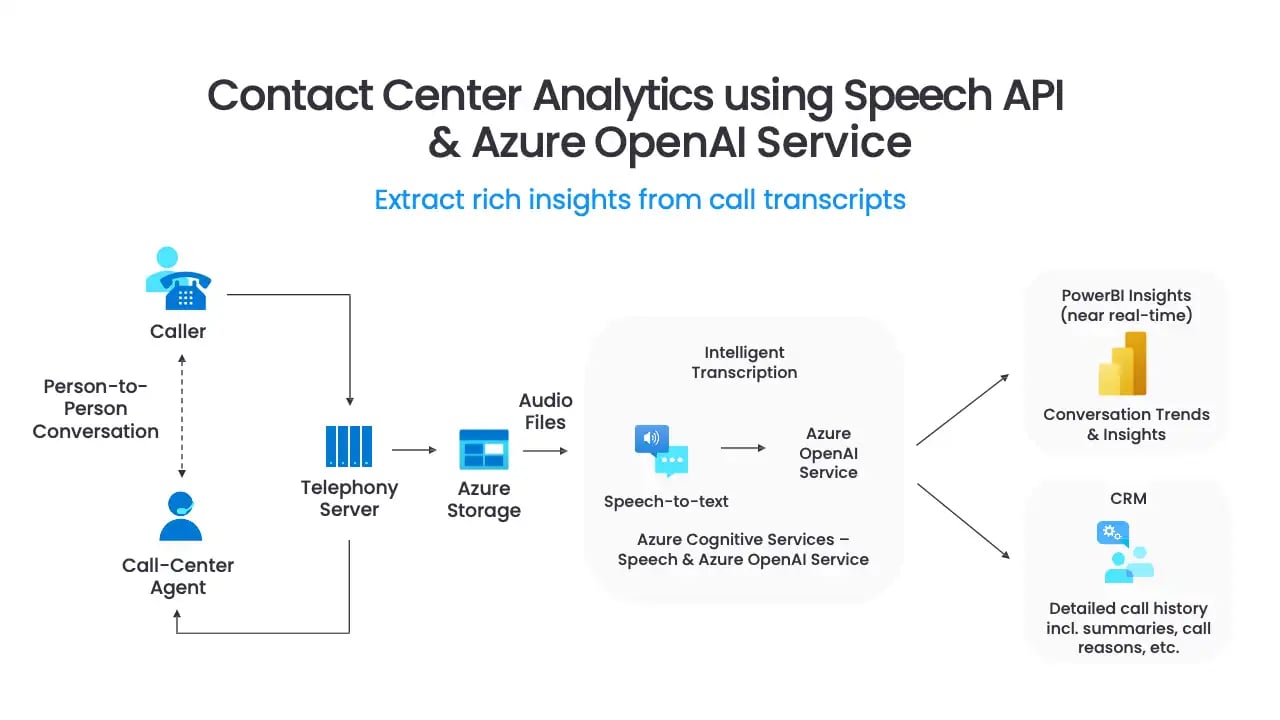
Microsoft has highlighted various AI capabilities, such as content generation, summarisation, code generation, and semantic search.
1. Content generation encompasses written, visual, and audio content, which can help save time for employees and decision-makers.
2. Summarisation features include summarising written and video content, financial and analyst reports, charts, and trends. See the example below.
3. By using code generation, engineers and individuals who use coding in their daily activities can save time and avoid tedious work when converting natural language to SQL for telemetry data.
4. Semantic search is a feature that enhances the quality of search results for text-based queries. By enabling it on your search service, the query execution pipeline is extended to include a secondary ranking of results based on their semantic relevance. Additionally, semantic search extracts and returns captions and answers that can be displayed on a search page to improve the user's search experience.
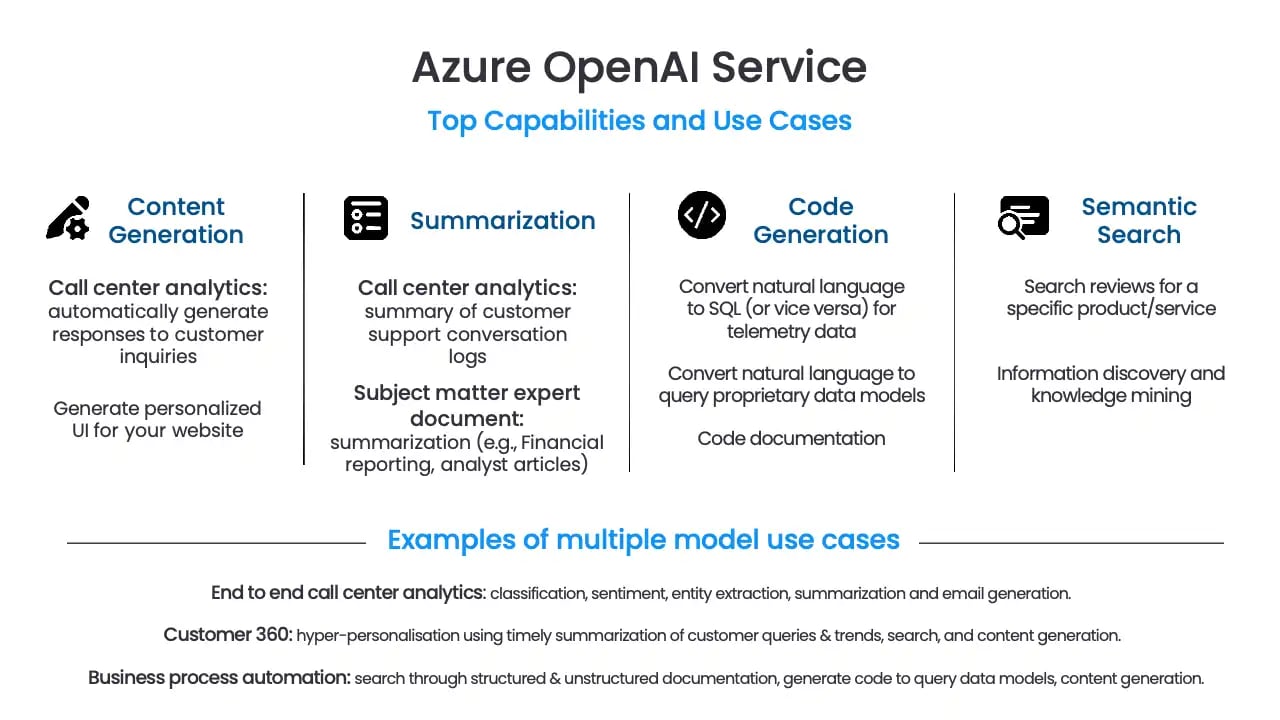
OpenAI's advanced language models have been utilised in many industries around the world and are becoming increasingly popular due to their ability to process natural languages accurately and quickly. OpenAI's language models have already been used by companies such as Uber, Microsoft, Facebook, IBM, and Amazon for various purposes including customer support services, natural language processing for chatbots or voice assistants, and real-time decision-making applications in the healthcare or finance sectors. As more organisations explore the potential of using artificial intelligence in their operations, we expect that the usage of these powerful language models will continue to grow exponentially over the next few years. Even though this technology is still developing, it will have a continuous and significant impact on the corporate world. This is just the beginning.
Azure OpenAI's Impact
With OpenAI's integration with Microsoft’s Azure every function and application can have expanded capabilities. OpenAI service is a part of Azure Cognitive Services. Tasks such as translation, natural language processing, image recognition, and more can be automated with AI models. The diagram below illustrates the relationship between Azure AI and OpenAI Service and highlights the impact of the latter on the Azure ecosystem. Some examples from the diagram below:
- Better Microsoft Teams meeting management - through meeting scheduling, transcriptions, speech helper, and more
- LinkedIn's better matching and content moderation
- Microsoft Word's reading and writing assistance
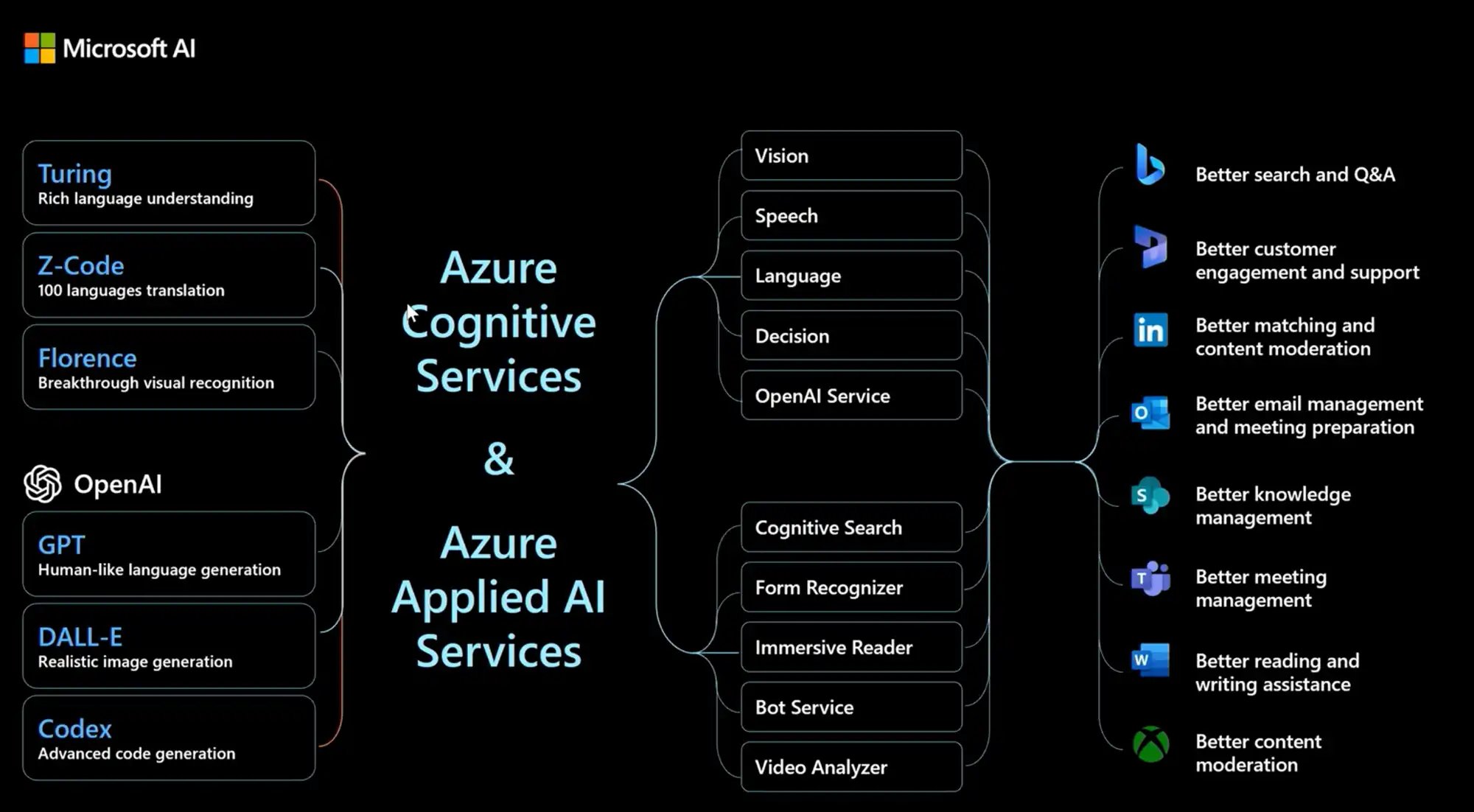
Alongside these enhancements, OpenAI helps other Microsoft innovations like Microsoft Co-Pilot, Azure's Power Platform, and others listed below.
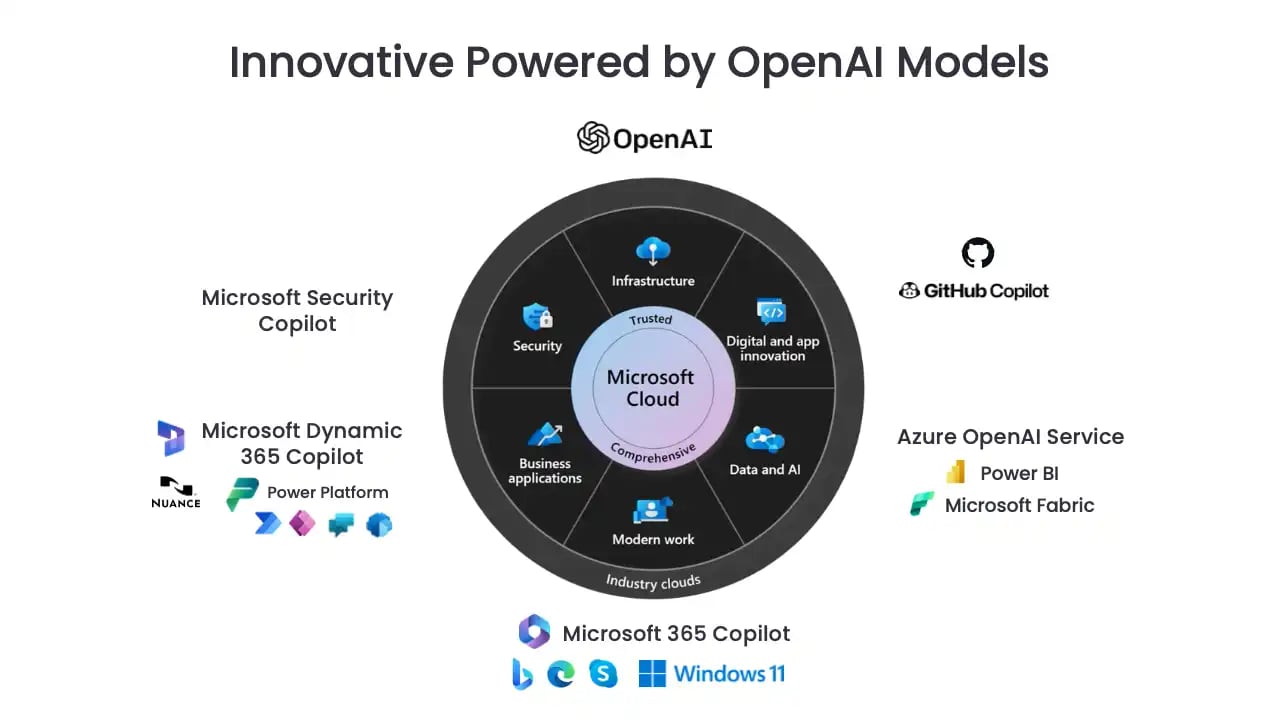
Azure OpenAI Use Cases
This partnership broadens the capabilities of technology, this list includes use cases but it is not limited to these applications:
- Reason over structured and unstructured data: The available methods for analysing user inputs are classification, sentiment analysis, and entity extraction. Some applications of these methods include analysing the sentiment of product feedback, analysing support calls and transcripts, and improving text-based searches
- Chat and conversation interaction: The conversational agent allows users to ask questions within a specific range of topics. The agent will provide responses based on reliable sources such as internal company or tech support documentation.
- Chat and conversation creation: The users can develop a chatbot that uses answers from reliable sources like internal company records or technical support documents. The chatbot can only provide responses to specific questions within a defined scope.
- Code generation or transformation scenarios: Examples of what computers can do: Change one type of programming code into another, make a list of instructions for functions, and turn words into SQL language.
- Summarisation: The application allows users to submit content for summarisation, but only for specific topics stored within the application. It is not a general summarisation tool. The available topics include summarising internal company documents, call centre transcripts, technical reports, and product reviews.
- Journalistic content: The application can be utilised to generate new journalistic content or to assist in rephrasing journalistic content from the user within particular topics. However, it cannot be used for creating content on any general topic. It is strictly prohibited to utilise the app for creating content that promotes political campaigns.
- Question-answering: The application allows users to ask questions and get answers, which are based on trusted source documents like the company's internal documentation. The answers provided by the application are always supported by trustworthy documentation and are not generated out of thin air.
- Search: Users can search for trusted source documents such as internal company documentation. The application does not generate results ungrounded in trusted source documentation.
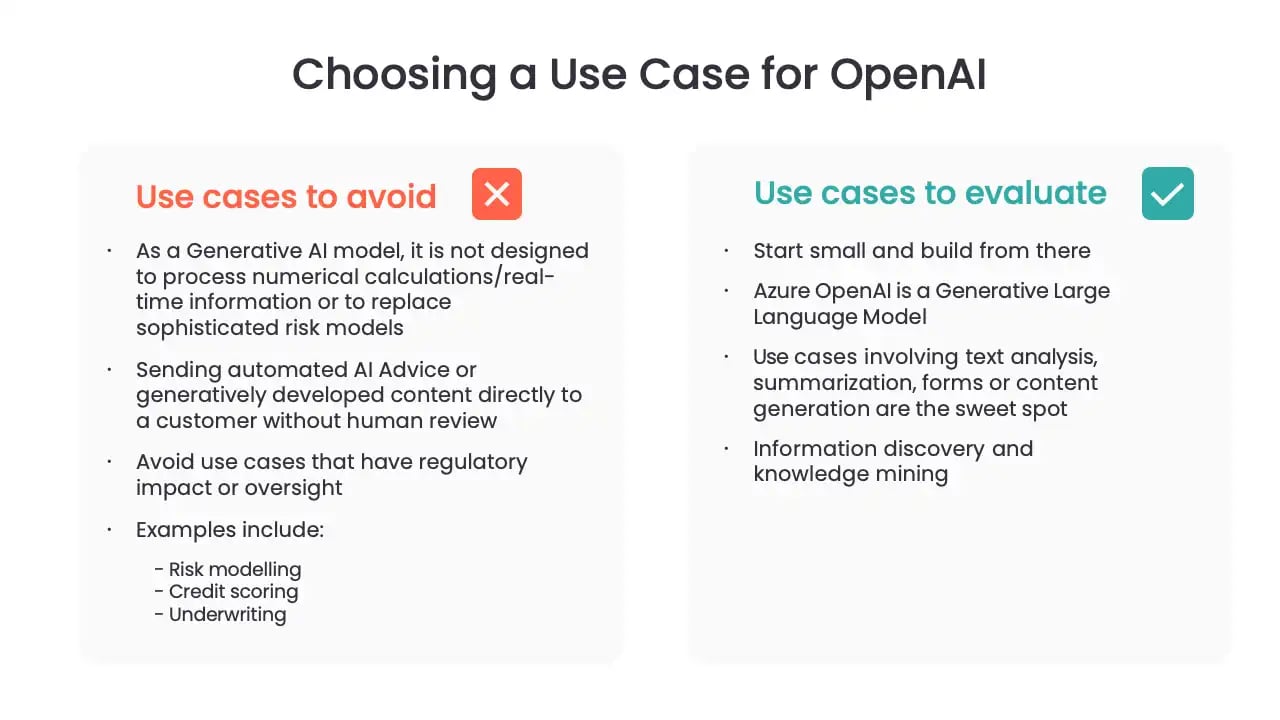
Conclusion
Azure OpenAI is a powerful tool for businesses that want to take advantage of the latest artificial intelligence technology. With its integration with Azure, businesses can expand their capabilities and add new features like code generation, summarisation, and semantic search. By leveraging AI models within OpenAI Service, companies can automate processes such as natural language processing and image recognition with ease. Businesses will be able to use these models in various domains and applications to save time while helping employees make better decisions quickly. This partnership between Microsoft and OpenAI has already made major contributions to many organisations around the world, including LinkedIn and Uber.
Azure OpenAI is an invaluable tool for businesses looking to take advantage of the latest artificial intelligence advances. By leveraging OpenAI Service within Azure, organisations can automate processes such as natural language processing and image recognition with ease. Through its integration with Microsoft's products, companies can benefit from AI in many ways and build new applications that make their operations faster and more efficient. The potential is almost limitless!
Don't let your organisation fall into a laggard state with outdated technology. Set your sights on becoming a fast follower and bridge any gaps in your technology roadmap by investing wisely in key areas such as incorporating AI services. Understanding your organisation's technology roadmap is no longer an option - it's a necessity.